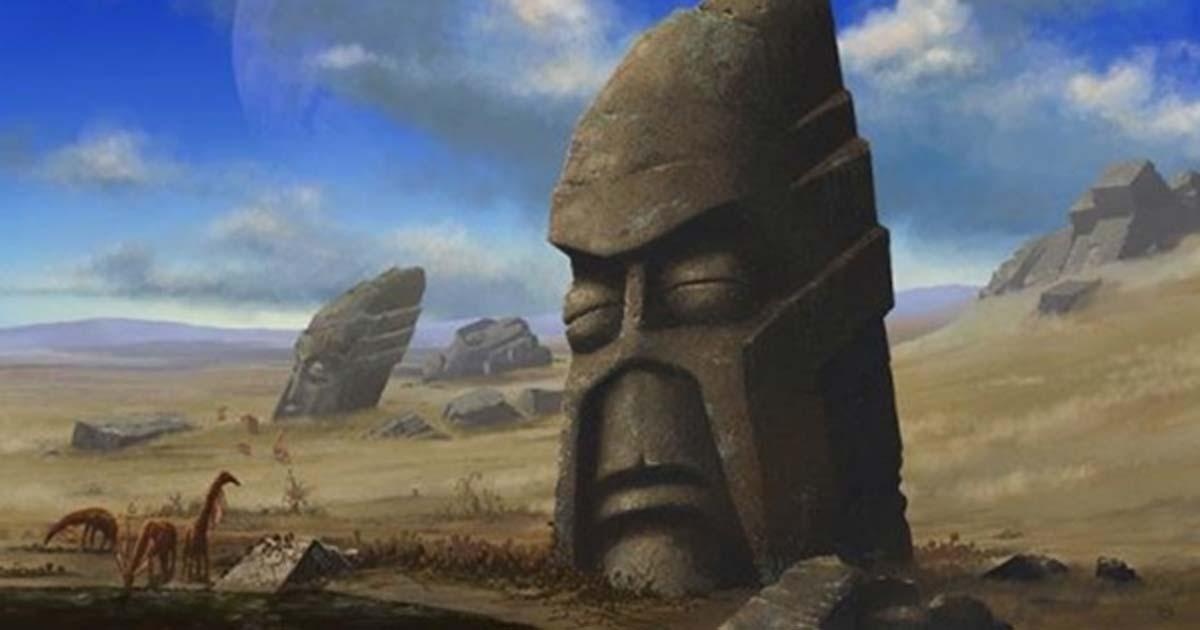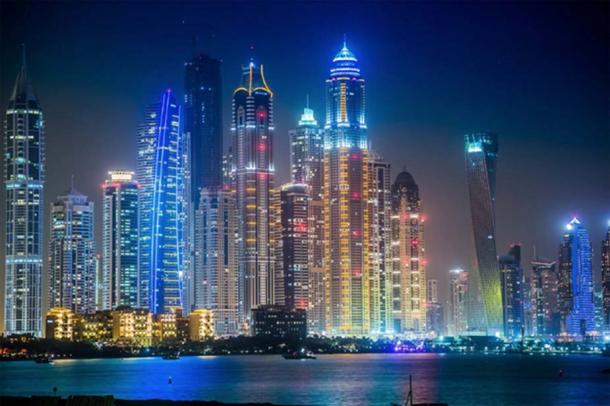
Can Any Civilization Make It Through Climate Change?
A case study of the inhabitants of Easter Island served in part as the basis for a mathematical model showing the ways a technologically advanced population and its planet might develop or collapse together. Rochester astrophysicist Adam Frank and his collaborators created their model to illustrate how civilization-planet systems co-evolve.
In the face of climate change, deforestation and biodiversity loss, creating a sustainable version of civilization is one of humanity's most urgent tasks. But when confronting this immense challenge, we rarely ask what may be the most pressing question of all: How do we know if sustainability is even possible?
Astronomers have inventoried a sizable share of the universe's stars, galaxies, comets, and black holes. But are planets with sustainable civilizations also something the universe contains? Or does every civilization that may have arisen in the cosmos last only a few centuries before it falls to the climate change it triggers?
- Scientists Reveal that Mysterious and Explosive Signals are Definitely Coming from Outer Space
- The Comet that Changed Civilization – And May Do Again
- Initial Stage Reached on Dream of Cloning Woolly Mammoth

Effects of deforestation and other environmental change might not be reversable. (CC BY-SA 4.0)
Is Sustainability of Civilizations Possible?
Astrophysicist Adam Frank, a professor of physics and astronomy at the University of Rochester, is part of a group of researchers who have taken the first steps to answer these questions. In a new study published in the journal Astrobiology, the group - including Frank, Jonathan Carroll-Nellenback, a senior computational scientist at Rochester, Martina Alberti of the University of Washington, and Axel Kleidon of the Max Planck Institute for Biogeochemistry - addresses these questions from an "astrobiological" perspective.
"Astrobiology is the study of life and its possibilities in a planetary context," says Frank, who is also author of the new book Light of the Stars: Alien Worlds and the Fate of the Earth, which draws on this study. "That includes 'exo-civilizations' or what we usually call aliens."
Frank and his colleagues point out that discussions about climate change rarely take place in this broader context - one that considers the probability that this is not the first time in cosmic history that a planet and its biosphere have evolved into something like what we've created on Earth. "If we're not the universe's first civilization," Frank says, "that means there are likely to be rules for how the fate of a young civilization like our own progresses."

Is this kind of civilization really sustainable? (Public Domain)
A Co-evolution of Civilization-Planet Systems
As a civilization's population grows, it uses more and more of its planet's resources. By consuming the planet's resources, the civilization changes the planet's conditions. In short, civilizations and planets don't evolve separately from one another; they evolve interdependently, and the fate of our own civilization depends on how we use Earth's resources.
In order to illustrate how civilization-planet systems co-evolve, Frank and his collaborators developed a mathematical model to show ways in which a technologically advanced population and its planet might develop together. By thinking of civilizations and planets - even alien ones - as a whole, researchers can better predict what might be required for the human project of civilization to survive.
"The point is to recognize that driving climate change may be something generic," Frank says. "The laws of physics demand that any young population, building an energy-intensive civilization like ours, is going to have feedback on its planet. Seeing climate change in this cosmic context may give us better insight into what's happening to us now and how to deal with it."
- Planet X – Is there Scientific Evidence?
- New research suggests early contact between Easter Island and Americas
- The Cataclysm of Easter Island - Part 1
Modelling Civilization-Planet Systems
Using their mathematical model, the researchers found four potential scenarios that might occur in a civilization-planet system:
1. Die-off: The population and the planet's state (indicated by something like its average temperature) rise very quickly. Eventually, the population peaks and then declines rapidly as the rising planetary temperature makes conditions harder to survive. A steady population level is achieved, but it's only a fraction of the peak population. "Imagine if 7 out of 10 people you knew died quickly," Frank says. "It's not clear a complex technological civilization could survive that kind of change."
2. Sustainability: The population and the temperature rise but eventually both come to steady values without any catastrophic effects. This scenario occurs in the models when the population recognizes it is having a negative effect on the planet and switches from using high-impact resources, such as oil, to low-impact resources, such as solar energy.
3. Collapse without resource change: The population and temperature both rise rapidly until the population reaches a peak and drops precipitously. In these models civilization collapses, though it is not clear if the species itself completely dies outs.
4. Collapse with resource change: The population and the temperature rise, but the population recognizes it is causing a problem and switches from high-impact resources to low-impact resources. Things appear to level off for a while, but the response turns out to have come too late, and the population collapses anyway.
"The last scenario is the most frightening," Frank says. "Even if you did the right thing, if you waited too long, you could still have your population collapse."
The researchers created their models based in part on case studies of extinct civilizations, such as the inhabitants of Easter Island. People began colonizing the island between 400 and 700 AD and grew to a peak population of 10,000 sometime between 1200 and 1500 AD. By the 18th century, however, the inhabitants had depleted their resources and the population dropped drastically to about 2,000 people.

Easter Island - model for an extinct civilization. (CC0)
The Easter Island population die-off relates to a concept called carrying capacity, or the maximum number of species an environment can support. The earth's response to civilization building is what climate change is really all about, Frank says. "If you go through really strong climate change, then your carrying capacity may drop, because, for example, large-scale agriculture might be strongly disrupted. Imagine if climate change caused rain to stop falling in the Midwest. We wouldn't be able to grow food, and our population would diminish."
What does the Modelling Predict?
Right now researchers can't definitively predict the fate of the earth. The next steps will be to use more detailed models of the ways planets might behave when a civilization consumes energy of any form to grow. In the meantime, Frank issues a sober warning.
"If you change the earth's climate enough, you might not be able to change it back," he says. "Even if you backed off and started to use solar or other less impactful resources, it could be too late, because the planet has already been changing. These models show we can't just think about a population evolving on its own. We have to think about our planets and civilizations co-evolving."
Top image: Stylized artists impression of Easter Island. Credit: University of Rochester illustration / Michael Osadciw
Source: University of Rochester. "Alien apocalypse: Can any civilization make it through climate change?" ScienceDaily. ScienceDaily, 4 June 2018. www.sciencedaily.com/releases/2018/06/180604172652.htm
The article, originally titled, ‘Alien apocalypse: Can any civilization make it through climate change?’ was originally published on Science Daily.
References
A. Frank, Jonathan Carroll-Nellenback, M. Alberti, A. Kleidon. The Anthropocene Generalized: Evolution of Exo-Civilizations and Their Planetary Feedback. Astrobiology, 2018; 18 (5): 503 DOI: 10.1089/ast.2017.1671
















Comments
You forget a really important detail, the earth won't warm up that much anymore. Insulation works both ways, if there is enough co2 in the atmosphere the warmth of the sun won't reach the earth anymore. And that will be the start of a new ice age. Try to put that in your climate model to. It already happened a few times here on earth
How do we know if sustainability is even possible?
We don't know. But we have to act as if we do. To do anything else is immoral...